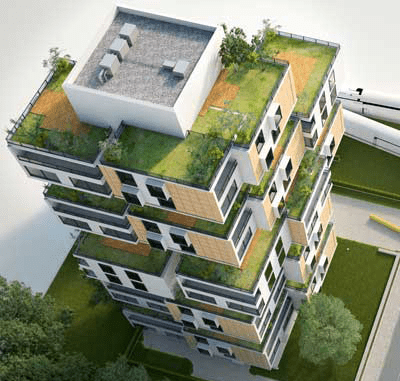Nikhil Sharma
Alliance for an Energy efficient Economy, New Delhi, India
Corresponding Author: nikhil@aeee.in
Brijesh Pandey
Alliance for an Energy efficient Economy, New Delhi, India
Akhil Singhal
Alliance for an Energy efficient Economy, New Delhi, India
Cite this article
Highlights
- Thermal comfort of students has been assessed.
- Impact of evaporative coolers on improving thermal comfort has been investigated.
- Recommendations have been provided to shift policy focus towards designing school buildings considering thermal comfort.
Abstract
The atmospheric temperature of the Indian subcontinent is rising steadily, with maximum and minimum temperatures increasing by up to 0.9º C and 0.5º C, respectively. Heat waves are becoming more frequent, posing a threat to vulnerable communities, including students, leading to changes in school schedules or closures in northern India. Unfortunately, thermal comfort assessment in Indian schools has received limited attention to date. To address this, a study was conducted in Ajmer (Hot and Dry climate) to evaluate thermal discomfort caused by heat stress in schools. The study investigates the relationship between students’ thermal comfort and indoor/outdoor thermal conditions and the effectiveness of low-energy cooling technology, such as ceiling fans and evaporative coolers, in mitigating thermal discomfort during heat stress conditions. Data collection and evaluation have been conducted before and after the deployment of evaporative coolers to gauge their effectiveness in improving the thermal comfort of the students. A Simulation-based approach is adopted post-deployment of coolers to quantify the improvement in thermal comfort. The study aimed to provide insights into the benefit of adopting effective cooling technologies for improving the indoor classroom environment for students and enabling policymakers to assess indoor thermal conditions and choose suitable technologies to help mitigate heat stress in schools.
The results show that low-energy cooling technology, like evaporative air coolers, helps in bringing down the indoor temperature to a thermally comfortable range for the students. In addition, this study established that there is a need to focus on thermal comfort while developing the school infrastructure, as it helps in improving the students’ learning cognizance, attendance ratio and physical well-being.
Keywords
Thermal Comfort, Heat Stress, Low-Energy Cooling Techniques, Evaporative Air Coolers.
References
- R. Krishnan, J. Sanjay, C.Gnanaseelan, M. Mujumdar, A. Kulkarni, and S. Chakraborty, “Assessment of Climate Change over the Indian Region,” In Assessment of Climate Change over the Indian Region, 2021. https://doi.org/10.1007/978-981-15-4327-2
- R. Lalit, and A. Kalanki, A. “How India is solving its cooling challenge,” World Economic Forum, 2021. https://www.weforum.org/agenda/2019/05/india-heat-cooling-challengetemperature-air-conditioning/
- Ministry of Environment, Forest and Climate Change of India (MOEF&CC). Indian Cooling Action Plan, 2019
- S. Sharma, A. Singhal, and T. Garg, “Decoding Evaporative Air Coolers”, 2021.
- Ministry of Education. (2020). Unified District Information Systems for Education Plus (UDISE+) 2019-20 Booklet. https://dashboard.udiseplus.gov.in/#/home
- M. J. Mendell and G. A. Heath, “Do Indoor Pollutants and Thermal Conditions in Schools Influence Student Performance? A Critical Review of the Literature,” Indoor Air, vol. 15, pp. 27-52, 2005. https://doi.org/10.1111/j.1600-0668.2004.00320.x
- W. J. Fisk, “The ventilation problem in schools: literature review,” Indoor Air, vol. 17. Pp. 1039-1051, 2017. https://doi.org/10.1111/ina.12403
- A. Jindal, “Investigation and analysis of thermal comfort in naturally ventilated secondary school classrooms,” Archit. Sci. Rev., vol. 62, pp. 466-484, 2019. https://doi.org/10.1080/00038628.2019.1653818
- S. Manu, Y. Shukla, R. Rawal, L. E. Thomas and R. de Dear, “Field studies of thermal comfort across multiple climate zones for the India Model for Adaptive Comfort (IMAC),” Build. Environ., vol. 98, pp. 55-70, 2016.
- Calculator Academy Team. Wet Bulb Calculator. https://calculator.academy/wet-bulbcalculator/2022

 Bishal Thapa
Bishal Thapa





 Fred Sherman
Fred Sherman Sumedha Malaviya
Sumedha Malaviya Satish Kumar
Satish Kumar












 The three main global energy concerns of providing access to modern energy, enhancing the security of the energy supply, and minimising the impact of energy systems on the climate have an impact on both national and international energy governance. To develop solutions that address the many facets of these difficulties, however, a variety of actors and stakeholders must be included due to the complexity of the energy challenges.
The three main global energy concerns of providing access to modern energy, enhancing the security of the energy supply, and minimising the impact of energy systems on the climate have an impact on both national and international energy governance. To develop solutions that address the many facets of these difficulties, however, a variety of actors and stakeholders must be included due to the complexity of the energy challenges. Cities are responsible for more than 70% of the world’s energy consumption and 40% to 50% of its greenhouse gas emissions. Managing increasing urbanisation is a challenge, and nations must deal with the effects it will have on the environment in terms of energy and climate.
Cities are responsible for more than 70% of the world’s energy consumption and 40% to 50% of its greenhouse gas emissions. Managing increasing urbanisation is a challenge, and nations must deal with the effects it will have on the environment in terms of energy and climate. Our transition to a future with lower carbon emissions depends heavily on buildings. They are our places of residence, rest, and employment; they also account for around one-third of the world’s greenhouse gas emissions and nearly 40% of the world’s energy usage.
Our transition to a future with lower carbon emissions depends heavily on buildings. They are our places of residence, rest, and employment; they also account for around one-third of the world’s greenhouse gas emissions and nearly 40% of the world’s energy usage.